Chasin’ Gators
Pursuing World Record Spotted Seatrout
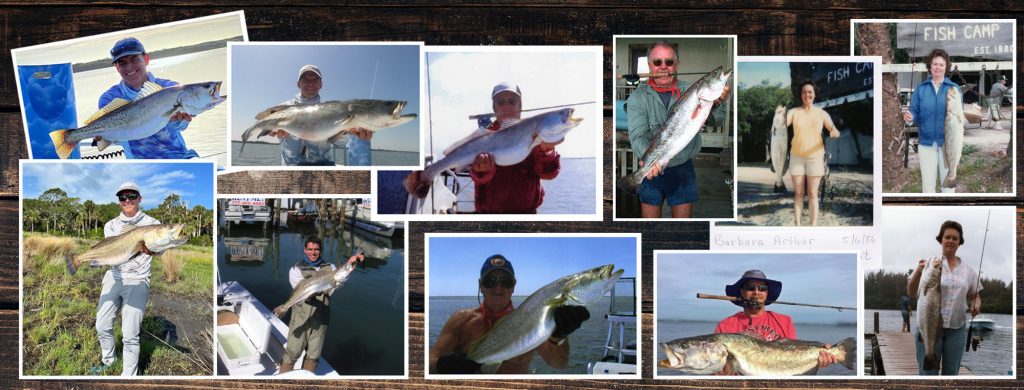
There are few species of inshore game fish that garner a cult-like following as the spotted seatrout. Found throughout the Gulf of Mexico and along the southeastern seaboard of the United States, millions of seatrout enthusiasts take the water annually to pursue this popular inshore game fish.
In the world of spotted seatrout, the magic number is 10 pounds (4.5 kilograms). Fish of this size are commonly referred to as “gator” trout and catching a fish of this caliber is the pinnacle of achievement for seatrout enthusiasts. Catching one fish of this size is the dream of any avid seatrout angler, and is considered by many as a once-in-a-lifetime achievement.
However, there are several individuals who have seemingly mastered the pursuit of giant gator seatrout. In this article, we interview several of these individuals who have “earned their salt” when it comes to catching world-record-class spotted seatrout.
Barbara Smith: A Trailblazing Angler
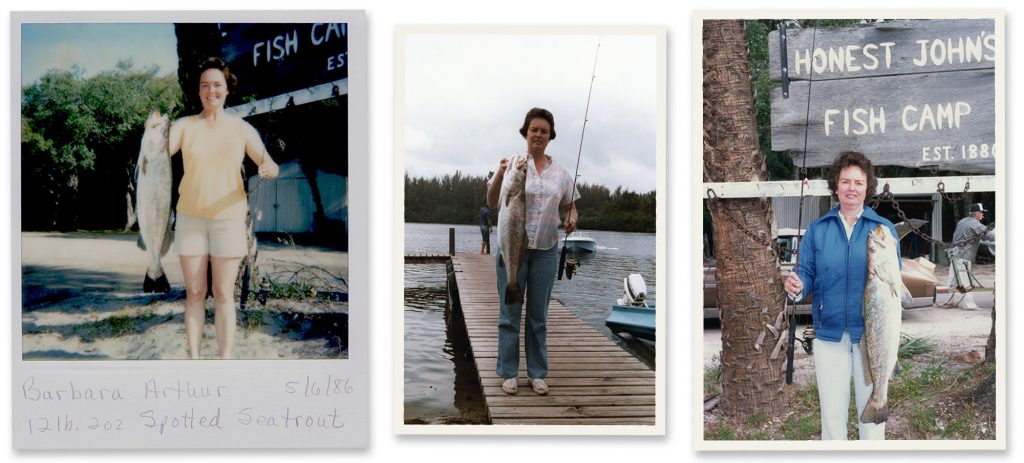
Breaking barriers and redefining the sport, in the 1980s, Barbara Arthur Smith was a trailblazer in the world of gator-sized seatrout. Hailing from the central east coast of Florida, USA, Smith's journey to the IGFA World Record book began with a passion for catching world record-sized seatrout out of her family’s fish camp.
Smith doesn't recall who initially introduced her to IGFA; it might have been through word of mouth or perhaps a local newspaper. Regardless, fishing for seatrout became her passion and she discovered her knack for landing sizable ones.
Guided by her friend Don Hunter's advice, she approached her pursuit meticulously. Recognizing the importance of quality gear, preparation, and upkeep, she aimed for the highest standards. When she had the liberty to choose her fishing hours, she relied on solunar tables, yet her enthusiasm often led her to fish whenever an opportunity arose.
Her preferred method was using lively, medium-sized shrimp fished beneath a tiny bobber, which she would cast near the mangroves, letting the shrimp's natural movement attract the sizable trout nestled under the overhanging mangrove branches. Hunter's innovative lightweight bobbers aided in this approach, preventing the shrimp from sinking. Referring to the shrimp as "bird dogs," Don appreciated their lively motion, which enticed and coaxed the larger seatrout.
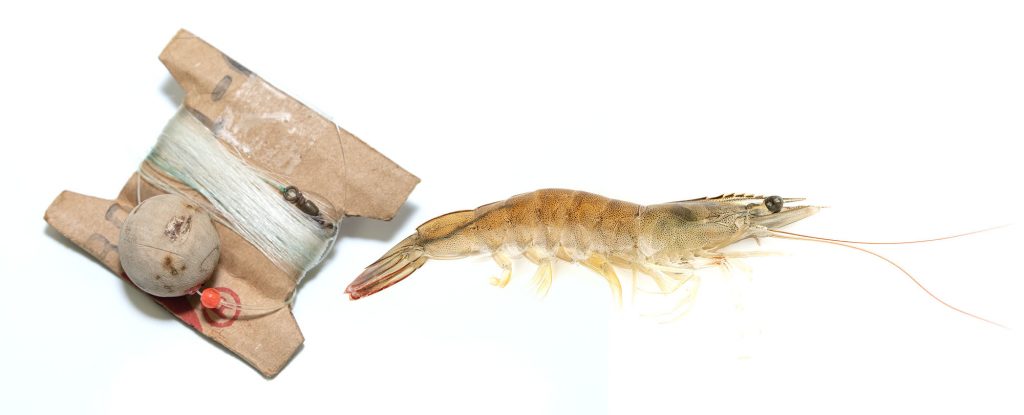 Over a three-year period from 1984 through 1987, she achieved the remarkable feat of landing three giant spotted seatrout that still hold IGFA World Records to this day. Smith caught a 4.7-kg (10-lb, 6-oz), 5.49-kg (12-lb, 2-oz), and 5.31-kg (11-lb, 11-oz) fish earning her the Women’s 02-kg (4-lb), 06-kg (12-lb) and 08-kg (16-lb) world records respectively.
Over a three-year period from 1984 through 1987, she achieved the remarkable feat of landing three giant spotted seatrout that still hold IGFA World Records to this day. Smith caught a 4.7-kg (10-lb, 6-oz), 5.49-kg (12-lb, 2-oz), and 5.31-kg (11-lb, 11-oz) fish earning her the Women’s 02-kg (4-lb), 06-kg (12-lb) and 08-kg (16-lb) world records respectively.

Smith's accomplishments not only showcased her prowess as an angler but also highlighted the skill of female anglers in a traditionally male-dominated sport at that time, and her journey to the IGFA World Record book continues to inspire both novice and seasoned anglers.
Jay Wright, Jr.: Chasing the Thrill
Jay Wright Jr.'s affinity for catching big trout began during his formative years, a passion fostered by his grandfather while fishing in Tampa Bay, Florida, USA. As is the case with many anglers, Wright’s passion evolved from catching numbers of fish to focusing solely on the largest specimens. This transition became an obsession, and he soon set his sights on setting an IGFA World Record for spotted seatrout.

Over the past decade, Wright has set several IGFA World Record spotted seatrout including a 4.08-kg (9-lb) fish on 01-kg (2-lb) tippet, a 4.76-kg (10-lb, 8-oz) fish on 03-kg (6-lb) tippet, a 5.21-kg (11-lb, 8-oz) fish on 06-kg (12-lb) tippet, and 4.82-kg (10-lb, 10-oz) fish on 10-kg (20-lb) tippet. In an exclusive interview, Wright shared insights into his successful streak of consecutive IGFA World Records on spotted seatrout.
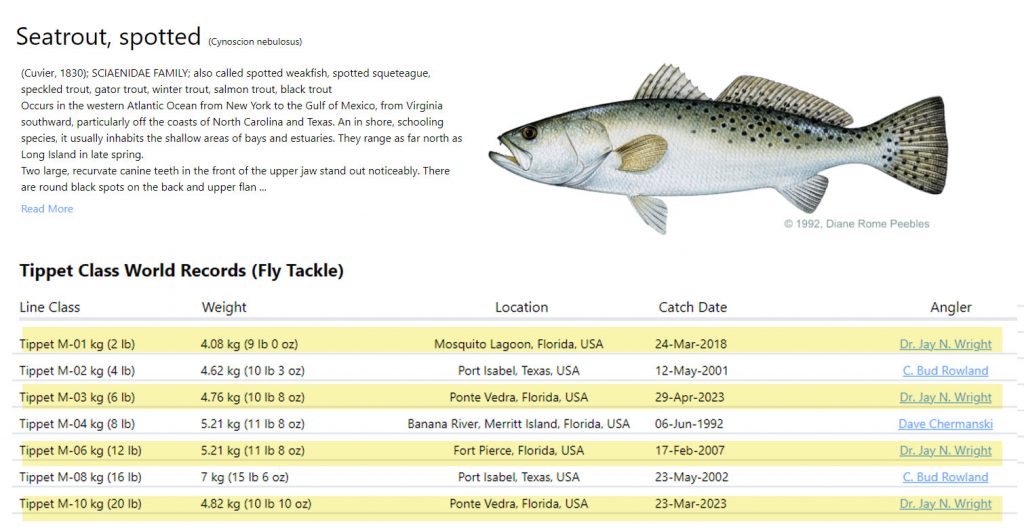 Jay's strategy for consistently catching record-sized seatrout emerged from over two decades of meticulous record-keeping. He cataloged key variables that he believed were influential in capturing trout weighing seven pounds or more. His analysis revealed that time of the year, moon phase, and to a lesser extent, solunar periods, were the most relevant factors. He also studied documented trout over 10 pounds, drawing from a wide array of sources including current and retired IGFA records, enabling him to optimize his time on the water. His findings emphasized fishing during the months of February to May, on days either just before or after the full moon.
Jay's strategy for consistently catching record-sized seatrout emerged from over two decades of meticulous record-keeping. He cataloged key variables that he believed were influential in capturing trout weighing seven pounds or more. His analysis revealed that time of the year, moon phase, and to a lesser extent, solunar periods, were the most relevant factors. He also studied documented trout over 10 pounds, drawing from a wide array of sources including current and retired IGFA records, enabling him to optimize his time on the water. His findings emphasized fishing during the months of February to May, on days either just before or after the full moon.
Jay's approach involves focusing on areas harboring substantial concentrations of large trout. However, these areas are subject to change over time. Early in his pursuit of line-class records in the early 2000s, the southern Indian River Lagoon was his prime ground. Yet, shifts like seagrass decline redirected him to the Mosquito Lagoon. As ecosystems evolved, so did his fishing grounds, including locations in northeast Florida and even south Texas. Locating these areas within a given estuary entails thorough exploration, often involving poling or using the trolling motor. His aim is to position himself where these big trout naturally congregate.
Jay's go-to fly pattern is a baitfish imitation tied with EP or Steve Farrar fibers, or a combination of both. He also incorporates a gurgler pattern when conditions don't permit sight fishing or when the trout are targeting shrimp. The gurgler's advantage lies in its lesser appeal to red drum, allowing him to target trout without interference from other species.
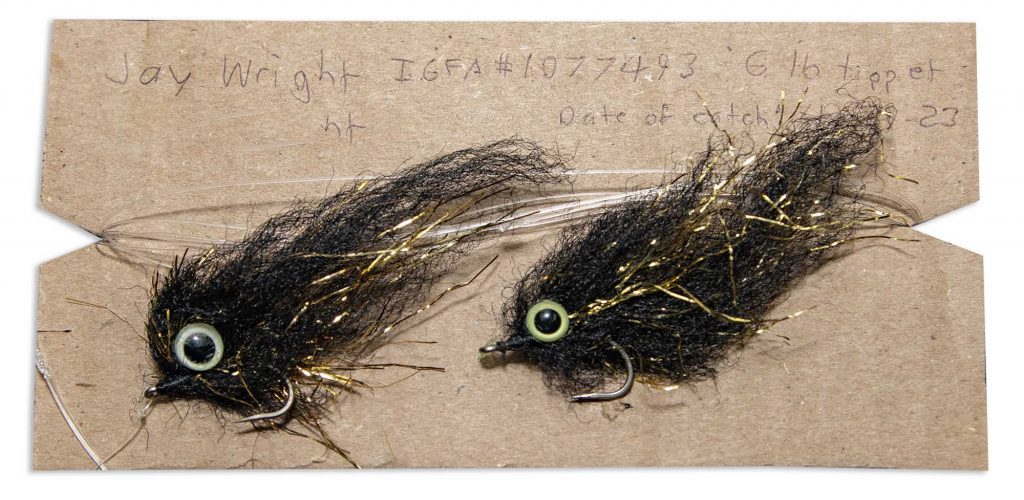 Aware of the heightened sensitivity of large trout, he meticulously curates his approach to minimize detection. His attention to detail includes using camouflage to blend into the environment and using the lightest fly line and longest leader that can effectively present the fly given the conditions. Typically, he uses a 5 or 7-weight clear fly line coupled with a 10 to 13-foot leader. His preference for EP baitfish patterns stems from their gentle landing, facilitating precise presentations. His casting distance varies based on circumstances, but he assesses the fish's orientation and conditions to make accurate decisions on when to cast.
Aware of the heightened sensitivity of large trout, he meticulously curates his approach to minimize detection. His attention to detail includes using camouflage to blend into the environment and using the lightest fly line and longest leader that can effectively present the fly given the conditions. Typically, he uses a 5 or 7-weight clear fly line coupled with a 10 to 13-foot leader. His preference for EP baitfish patterns stems from their gentle landing, facilitating precise presentations. His casting distance varies based on circumstances, but he assesses the fish's orientation and conditions to make accurate decisions on when to cast.
The allure of pursuing giant trout resonates deeply with Jay. While delayed gratification deters some, the intricate pursuit of records offers him a distinct pleasure. The satisfaction of investing countless hours in the pursuit of a seemingly elusive once-in-a-lifetime fish for many fuels his motivation.
Wright's achievements go beyond the numbers; it's a testament to the thrill of the chase and the camaraderie shared among anglers. He emphasizes the importance of respecting the species, practicing ethical angling, and giving back to the environment that provides so much joy.
To learn more about Dr. Jay Wright and his pursuit of world-class spotted seatrout, listen to his interview with Captain Chris Bush from the Speckled Truth podcast.
Carl “Bud” Rowland: A Texas Legend
The largest spotted seatrout ever recorded in Texas and the largest ever caught on fly tackle weighed 15 pounds, 6 ounces. In May 2002, Rowland landed this 37 1/4-inch monster seatrout from the Lower Laguna Madre, Texas, US, while sight casting from his boat near a spoil bank. The catch still stands as the 16-lb tippet world record for spotted seatrout. In addition, Rowland also holds the 4-lb tippet record with a 10 pound, 3 ounce fish he caught a year earlier on May 12, 2001.
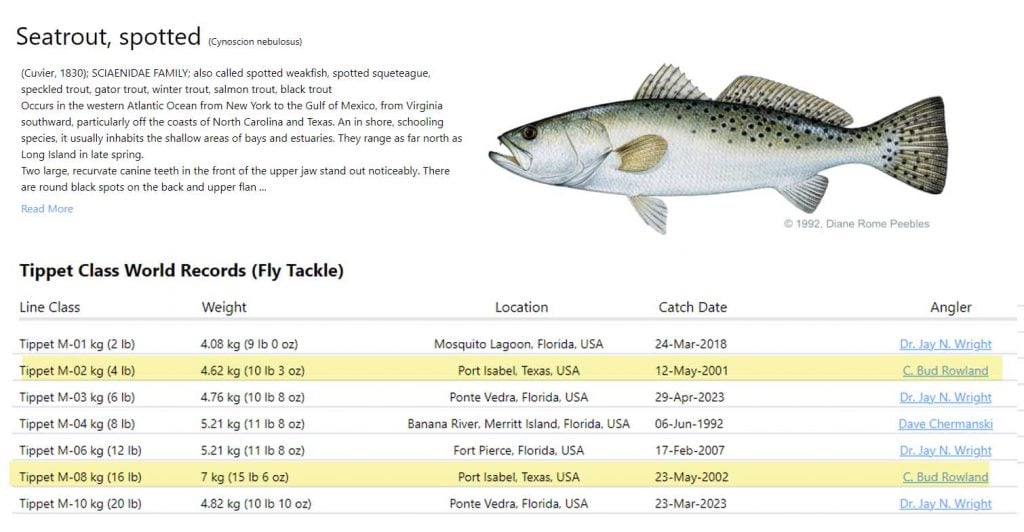 In a recent phone interview, we learned that during the early 1940s, as a young boy, Carl grew up fly fishing in Wyoming, US. His initial fishing experiences involved a bent bamboo rod that he learned to fly fish with. Despite the handicapped rod, he mastered the art of dry fly fishing and developed impressive accuracy in targeting fish within Wyoming's streams. In 1973, he relocated to Texas, where he transitioned his fly-fishing skills to saltwater environments.
In a recent phone interview, we learned that during the early 1940s, as a young boy, Carl grew up fly fishing in Wyoming, US. His initial fishing experiences involved a bent bamboo rod that he learned to fly fish with. Despite the handicapped rod, he mastered the art of dry fly fishing and developed impressive accuracy in targeting fish within Wyoming's streams. In 1973, he relocated to Texas, where he transitioned his fly-fishing skills to saltwater environments.
Having spent his youth fishing for rainbow and brown trout, Bud found a sense of nostalgia in pursuing spotted seatrout, even though the two species were not related. He took a methodical approach to studying seatrout, akin to his earlier analysis of freshwater trout habits. His curiosity led him to delve into the seatrout's food chain, from zooplankton to baitfish and crustaceans, which he then incorporated into the flies he tied. Bud experimented with crafting deer hair flies and poppers that resembled baitfish, shrimp, and crabs. His signature creation, the "Numero Uno," a 2-3” weedless fly designed to mimic mud minnows and pigfish, became a pivotal part of his approach.
 Bud's favored fishing strategy involves targeting productive sites like spoil banks—shallow submerged vegetation-covered sand mounds—known as excellent hunting grounds for large trout. Sight fishing constitutes approximately 75% of his angling approach in such areas. He strategically chooses to fish during robust tide events, often referring to solunar tables. In southern Texas, tides of 1-2 feet are particularly appealing to Bud, as they cause seagrasses to flush out, dislodging more prey and prompting heightened trout activity in shallow waters.
Bud's favored fishing strategy involves targeting productive sites like spoil banks—shallow submerged vegetation-covered sand mounds—known as excellent hunting grounds for large trout. Sight fishing constitutes approximately 75% of his angling approach in such areas. He strategically chooses to fish during robust tide events, often referring to solunar tables. In southern Texas, tides of 1-2 feet are particularly appealing to Bud, as they cause seagrasses to flush out, dislodging more prey and prompting heightened trout activity in shallow waters.
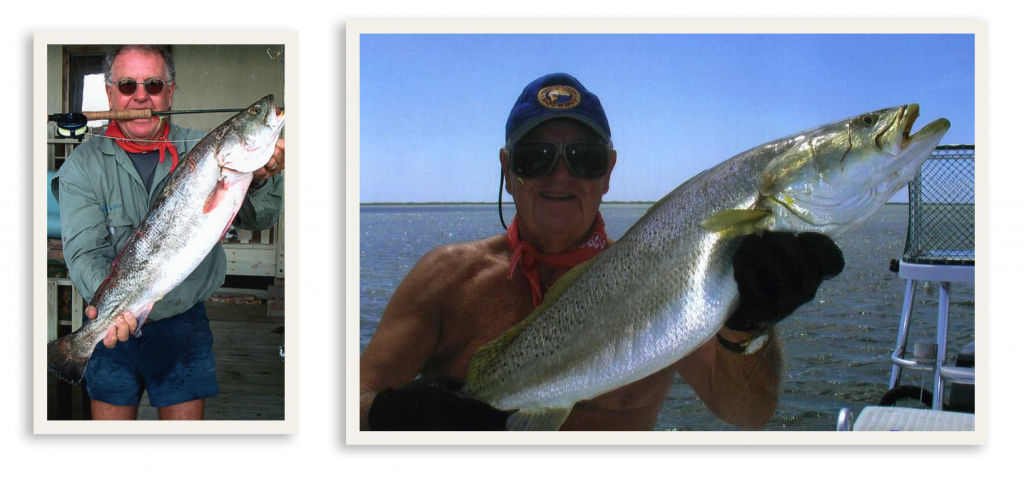 Bud's remarkable catch— the 15-pound, 6-ounce seatrout—occurred while drifting along a spoil bank. He spotted three fish, one small and two sizable, merely 25-30 feet away. Anticipating the smaller fish to bite, he cast his fly, only to have the larger trout take the fly. He enthusiastically called over to nearby anglers who were using popping corks to witness the moment. After landing the fish and weighing it on the sand, a snapshot was taken with a disposable camera before safely releasing the fish back into the water.
Bud's remarkable catch— the 15-pound, 6-ounce seatrout—occurred while drifting along a spoil bank. He spotted three fish, one small and two sizable, merely 25-30 feet away. Anticipating the smaller fish to bite, he cast his fly, only to have the larger trout take the fly. He enthusiastically called over to nearby anglers who were using popping corks to witness the moment. After landing the fish and weighing it on the sand, a snapshot was taken with a disposable camera before safely releasing the fish back into the water.

To learn more about Carl "Bud" Rowland and his pursuit of world-class spotted seatrout watch this short video.
Captain Peter Deeks: Guiding the Way

Captain Peter Deeks of Native Sons Charters was born and raised in Merritt Island, Florida, US, and has fished the famed inshore waters of the Indian River and Mosquito Lagoon since he was a young boy. Over the past several years, Deeks has firmly established himself as a prominent figure in the guiding realm, leading his clients to catch-and-release prized spotted seatrout, among other species. A visit to his online presence on Instagram unveils a continuous stream of posts that highlight his consistent expertise in helping clients reel in their personal best seatrout. And in 2015, Deeks guided his client Luke Ledbetter to the IGFA All-Tackle Length World Record for spotted seatrout with an impressive 34-inch (86-cm) fish. In a recent conversation, Captain Deeks offered a rare glimpse into his unyielding pursuit of landing trophy spotted seatrout.
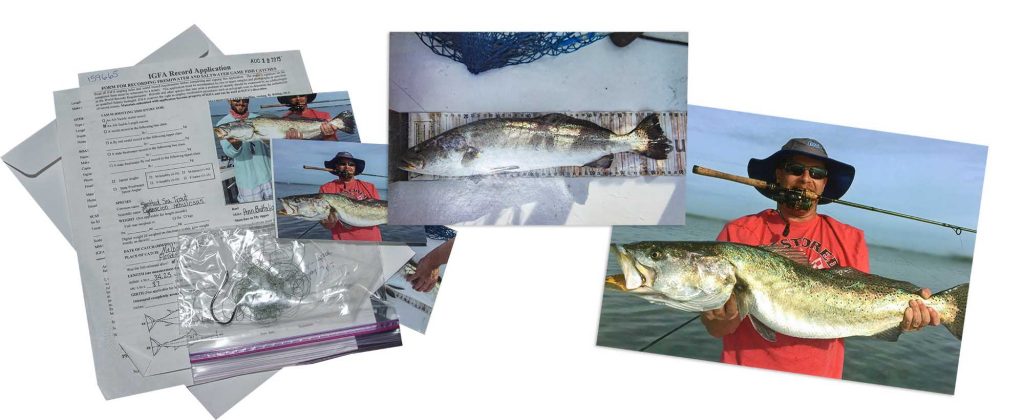
Deeks attributes the movement and feeding patterns of these fish to the presence of seagrass and structures near shallow flats. He explains that larger fish venture away from their grassy refuges to explore depressions known as potholes. Deeks prefers habitats that have nurtured these species over extended periods. He gravitates toward shallow areas adjacent to these habitats, offering refuge from predators and fostering growth over a decade or more. He identifies strategic locations with sturdy features such as mangrove shorelines, underscoring that world-class trout occasionally inhabit inconspicuous spots that may elude casual observation.
For Deeks, the prime period for targeting trophy trout in the Indian River typically spans from March to May. During this phase, these bigger fish migrate to shallower waters, becoming more visible and potentially heavier after ample foraging and growth in the cooler winter months. Conversely, the murkier waters of summer don't preclude the capture of larger fish, but the fish tend to hide in the prevalent seagrass for cover, rendering them more elusive. Deeks also notes a regional distinction, observing that seatrout caught in Florida during summer generally possess proportionally larger heads and smaller bodies.
Deeks is dedicated to stringent catch-and-release practices and is a strong proponent of the IGFA All-Tackle Length record program. “The program allows me to assist my clients in achieving world records without the necessity of returning to shore, weighing the catch, and potentially harming a world-class fish,” Deeks says. “Today, a record can be achieved from the vessel with a consistent measurement of the fish's length and then the fish can be released alive.”
Conclusion
Through the stories of legendary anglers like Barbara Smith, Jay Wright Jr., Carl Bud Rowland, and Captain Peter Deeks, we have gained insight into the pursuit of trophy spotted seatrout. These anglers have not only set records, but they also leave behind a legacy of conservation, ethical angling practices, and a love for the marine environment. As their stories continue to resonate with the angling community, they serve as a reminder that the waters hold endless opportunities for those willing to cast their lines into the unknown, guided by the wisdom of those who have come before.
